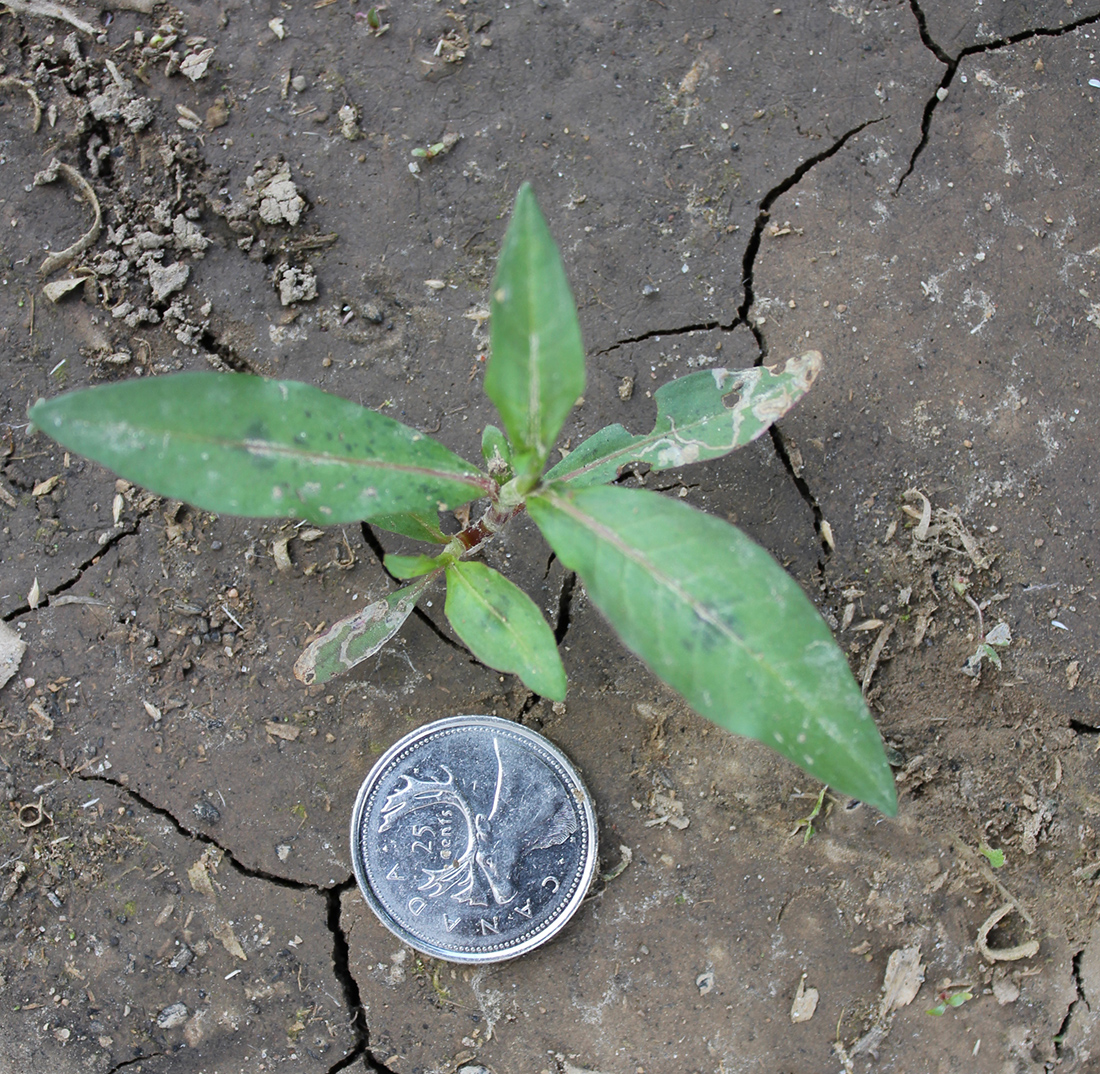Lady's Thumb
- Smartweed (Polygonaceae family):
- Persicaria maculosa Gray
- EPPO code:
- POLPE
- Other names:
- Red shank, smartweed
Species information
- Lifecycle:
- Annual.
- Propagation:
- Reproduces by seed.
- Emergence:
- Germinates and emerges early in the spring.
- Habitat:
- Lady’s thumb can be found throughout Ontario, although it is most often found in cultivated crops, waste places and open fields. The plant establishes in all types of soil.
- Competitiveness:
- Agriculture and Agri-Food Canada research has shown that lady’s thumb densities of 20,000 plants/ac can result in 13–15 percent yield loss in corn and soybeans.
Identification clues
Seedling
- Cotyledons:
- Oblong tapering into a short stalk, sometimes reddish purple underneath.
- First leaves:
- Lady’s thumb has elongated, alternate first leaves, often with black dots on the upper surface. Sometimes it has a black, triangular imprint, referred to as the “thumb mark,” which gives the plant its common name.
- Mature leaves:
- Appear similar to younger leaves with alternate leaf orientation. Leaves are elongated and have wavy margins, as well as the black “thumb mark.”
Mature plant
- Stems:
- The stems of lady’s thumb are erect and smooth, and range in colour from red to reddish-green to green. The membranous sheath surrounding the stem at each node, called the ocrea, is hairy.
- Flowers:
- Lady’s thumb flowers are small, each with five pinkish-white to pink sepals. The flowers are dense and crowded into narrow, cylindrical spikes.
- Seeds:
- The plant’s seeds are smooth, shiny black, typically flat, and oval with a pointed tip. Individual seeds are about 2 mm in diameter.
- Roots:
- Taproot.
Often mistaken for
I know it's not Pale/green smartweed because the ocrea of lady’s thumb is covered in short hairs and has a fringe of hairs on the top margin whereas the ocrea of pale/green smartweed is hairless.




Updated: August 16, 2023
Published: January 13, 2023